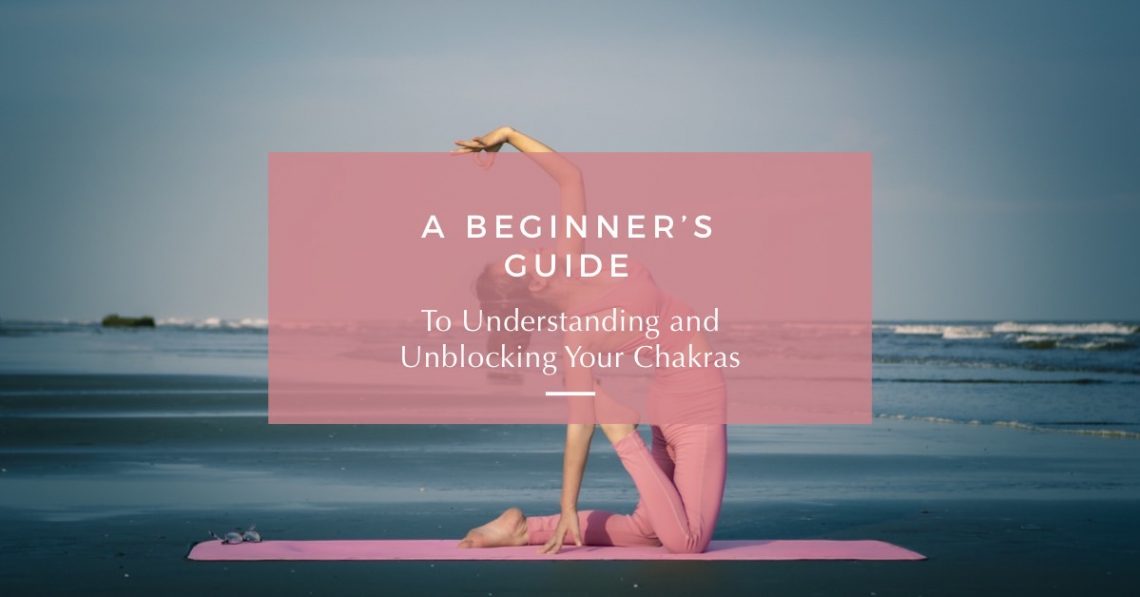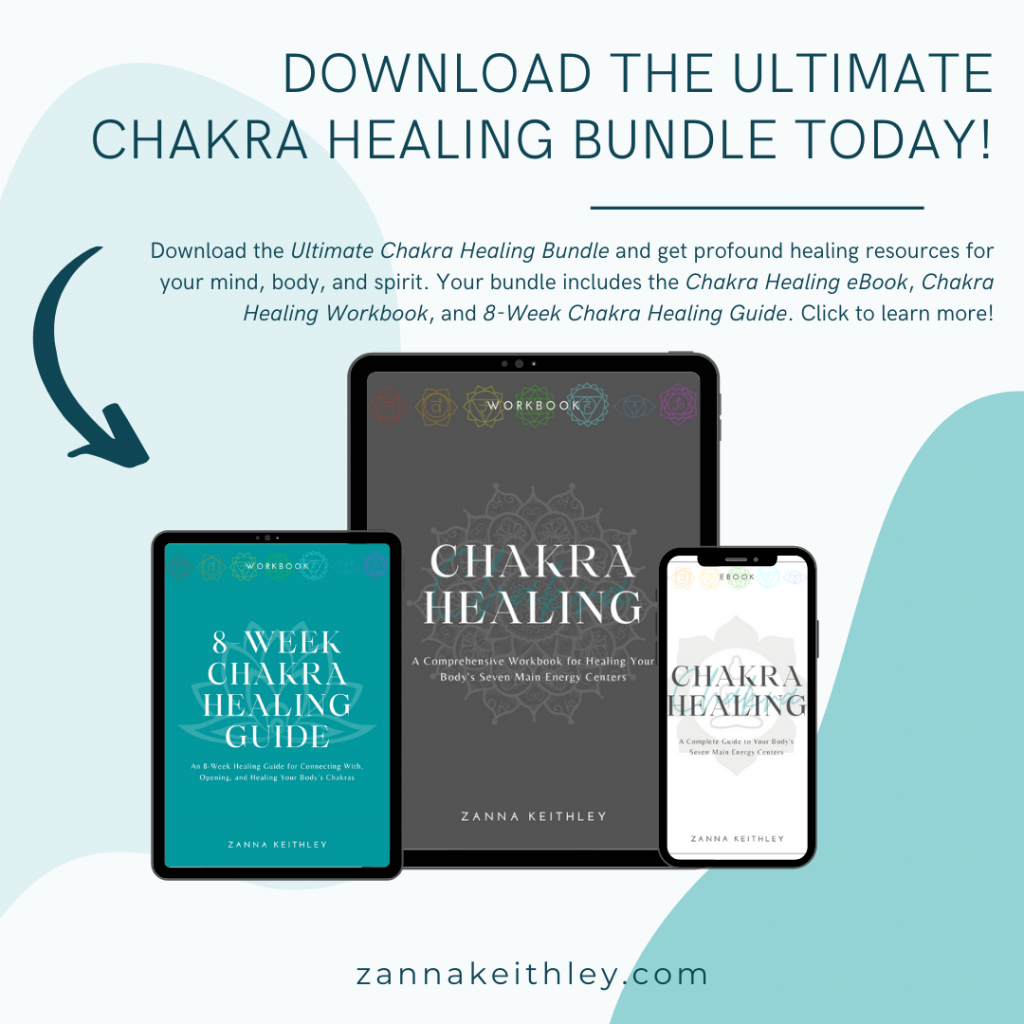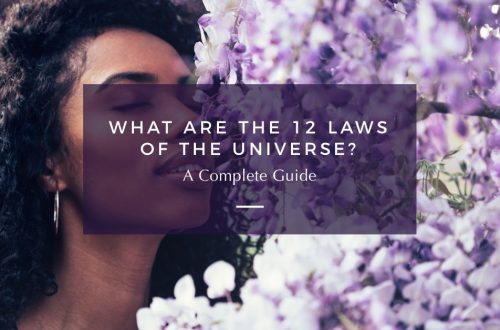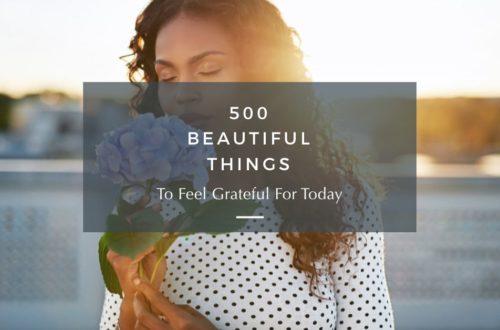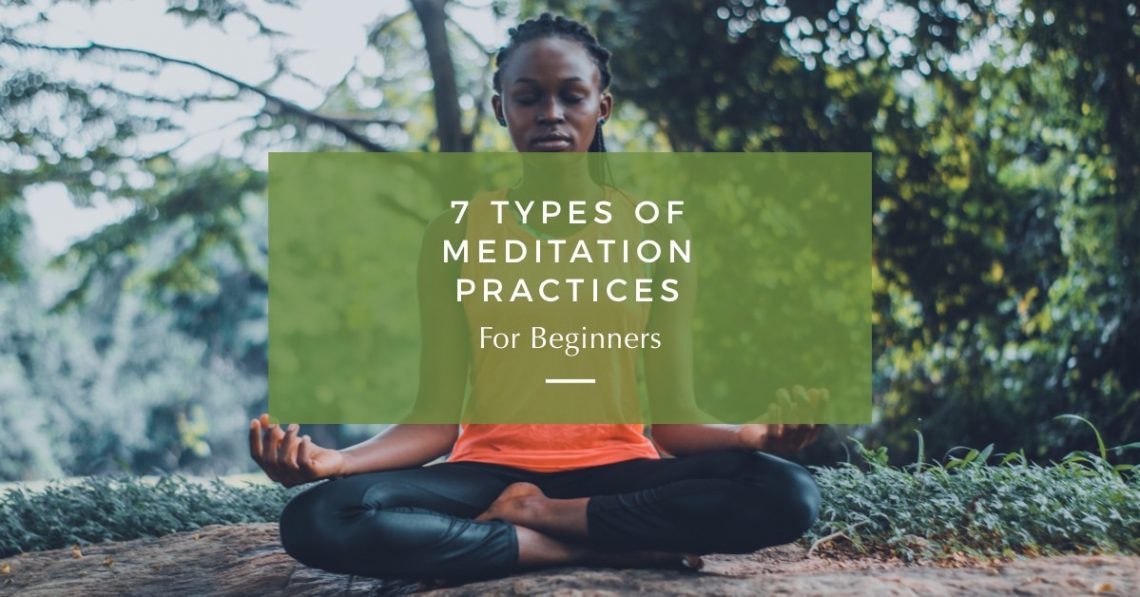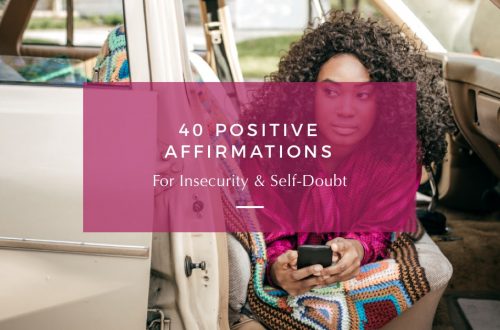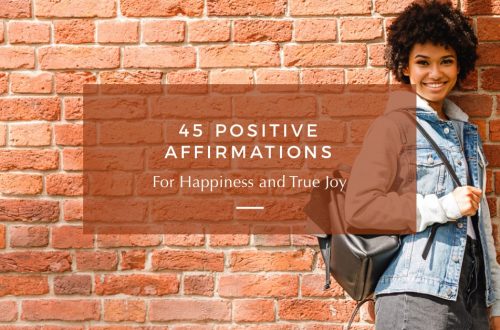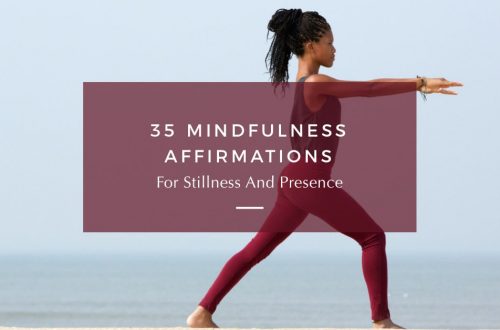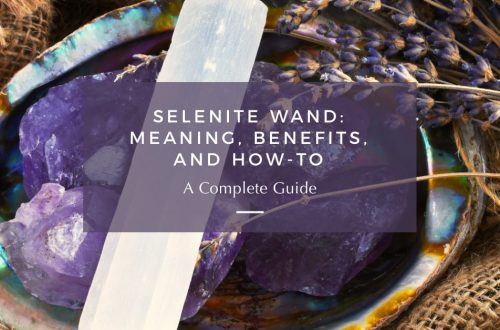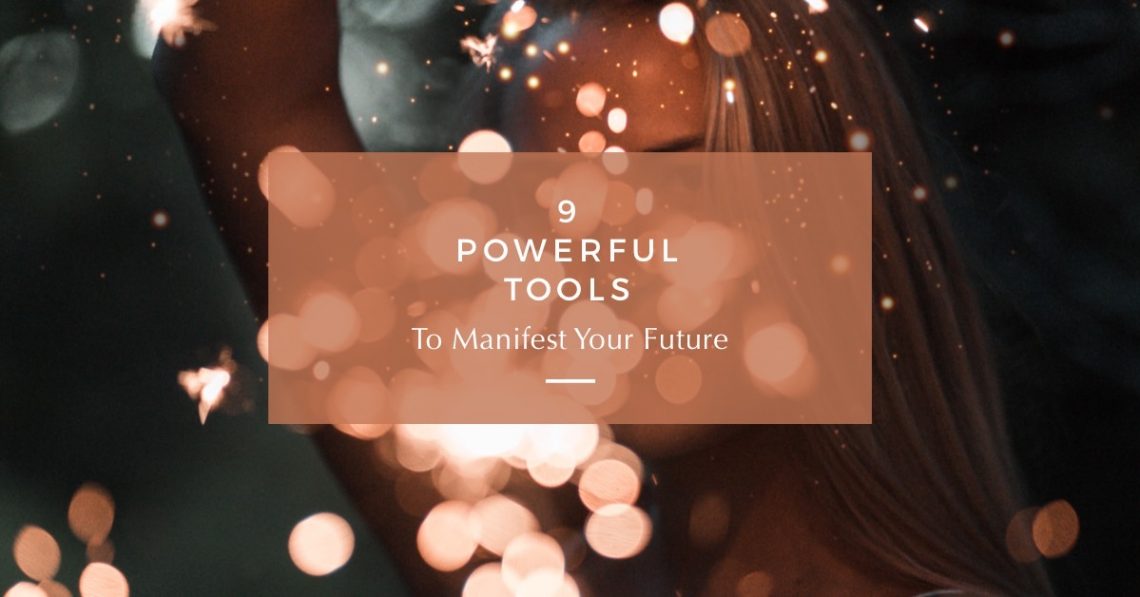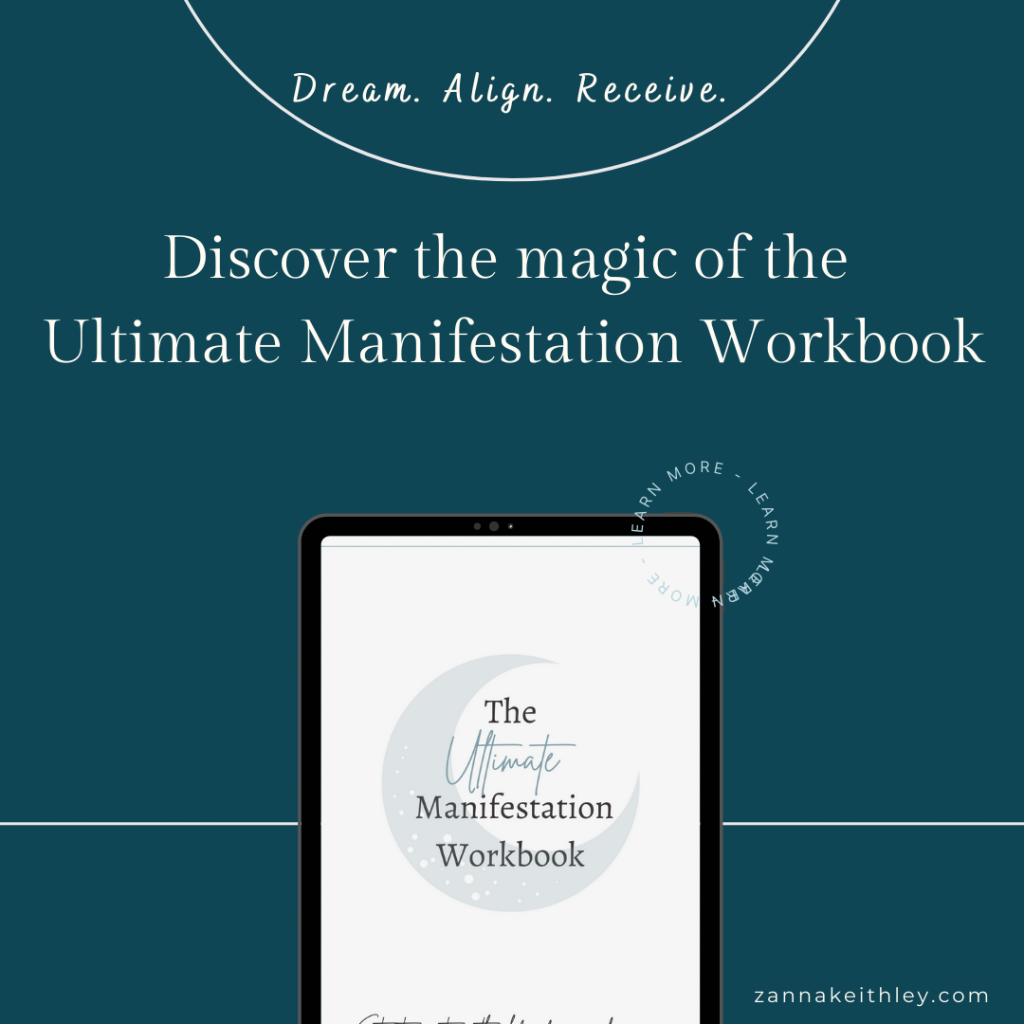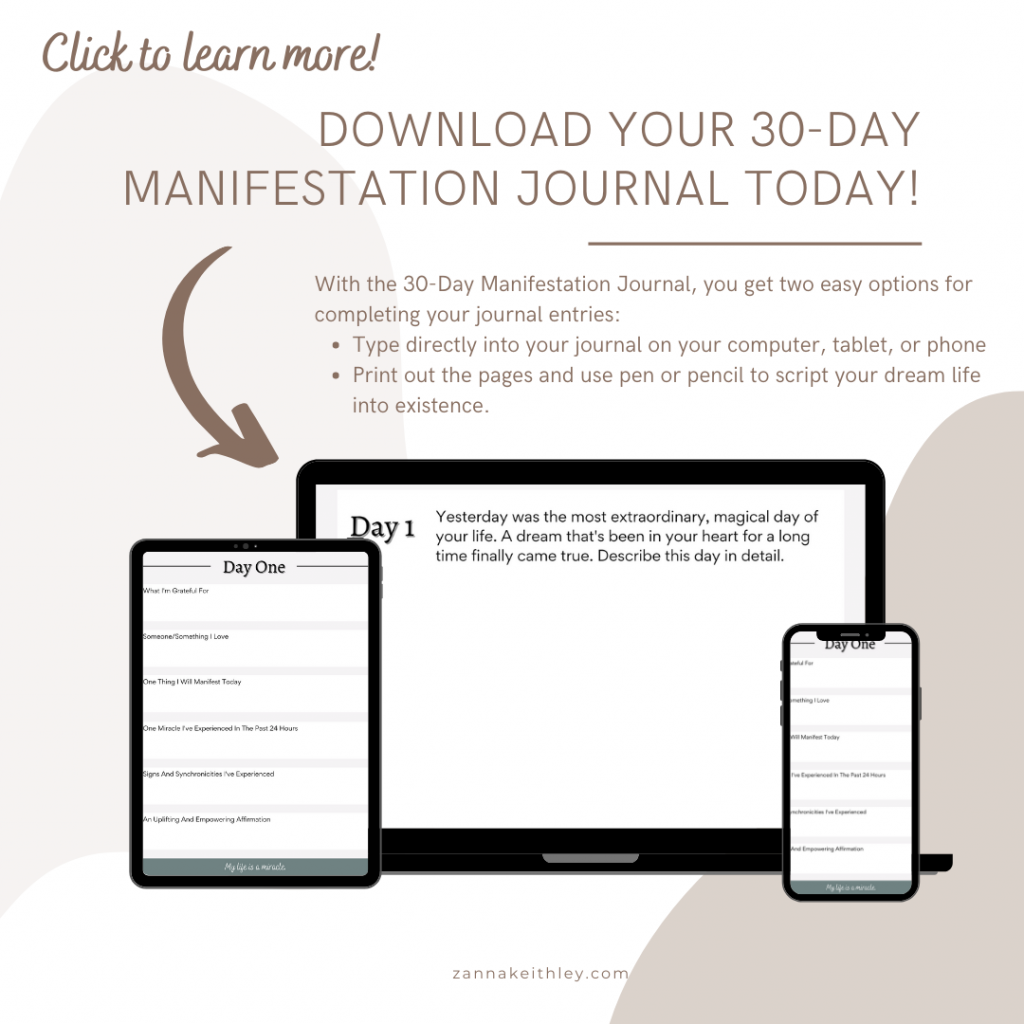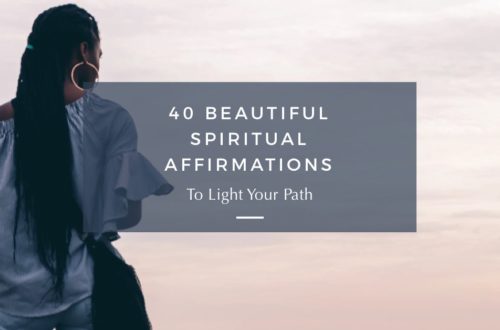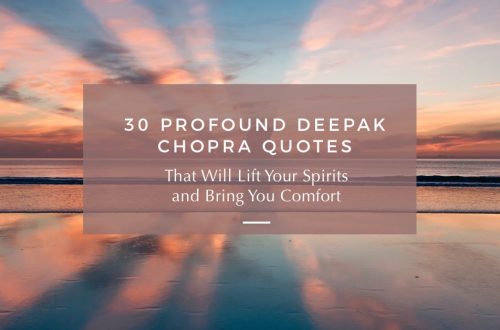-
Chakras for Beginners: Unblock Your Chakras Today
Looking for a guide to understanding chakras for beginners? I’ve got you covered with all the essential details you need to know to start understanding, activating, balancing, and unblocking your body’s important energy centers today.
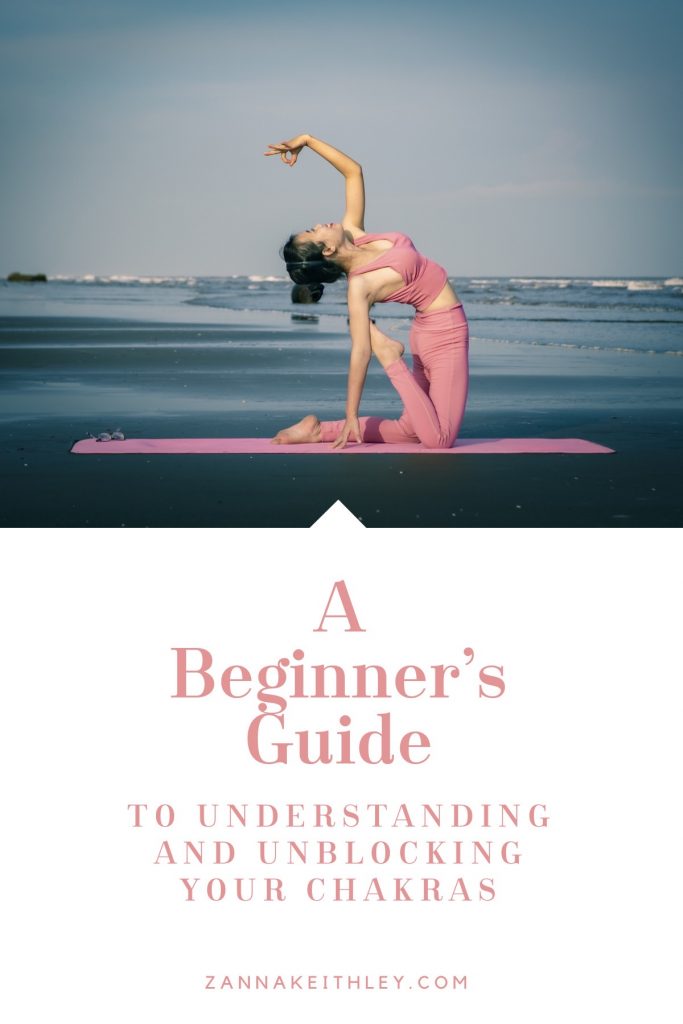
Chakras for Beginners: Unblock Your Chakras Today Discover More About Chakras
Chakras
If you’ve recently started a new meditation or yoga practice, you’ve likely heard the term chakras used by teachers, speakers, and guides. I still remember when I began listening to guided meditations and hearing terms like third eye chakra and crown chakra being used for the first time.
As a meditation beginner, I had a vague, fuzzy idea of what these words meant, but I wasn’t entirely sure on the specifics.
Depending on the teacher’s wording, I wasn’t always sure if my third eye chakra was between my eyes or higher up on my forehead, or if the crown chakra was actually on my head or above my head.
Each chakra has its own intricacies that you’ll want to understand, but before diving into the complexities of the individual chakras, it’s helpful to start with a solid foundation of the basics.
In this post, I provide you with a guide to understanding chakras for beginners. This guide contains a discussion of the seven main chakras and their roles as well as their colors, locations, and other significant details about each energy center.
I also provide you with affirmations related to each chakra, methods to balance and unblock your chakras, and links to some great meditations to help you activate your energy centers.
Chakras for Beginners: Overview
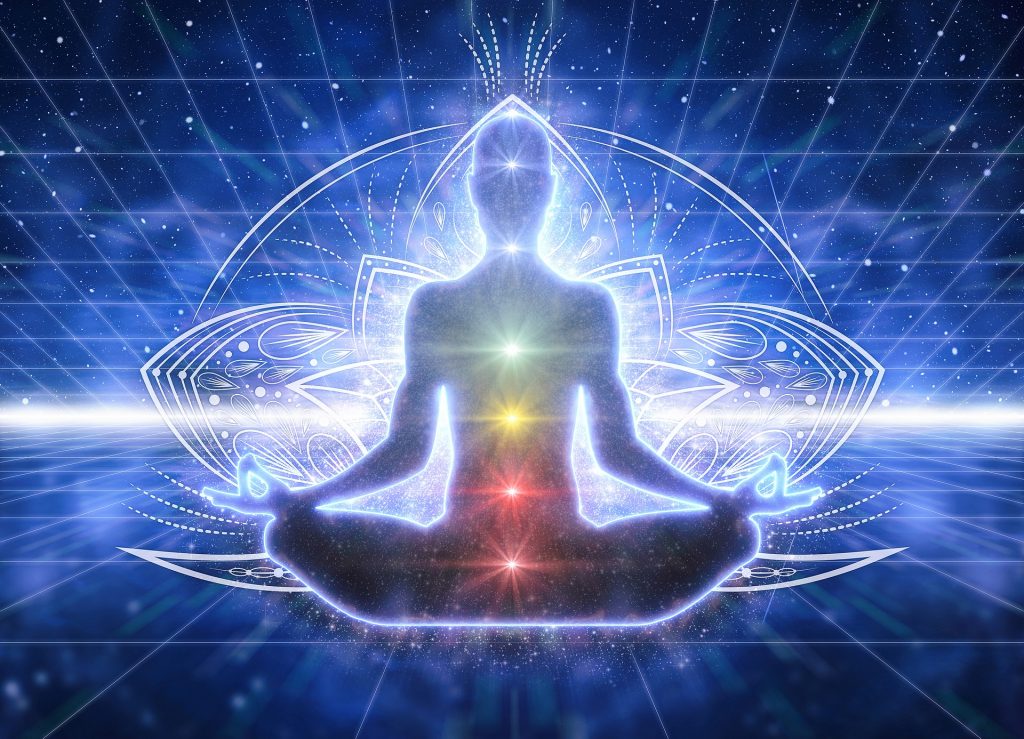
As I mentioned in the intro, there are seven main chakras. Each chakra has its name as well as its Sanskrit name, a specific location in the body, an associated color and symbol, and distinct roles and attributes. (Note that when I say they have specific locations in the body, a chakra is not a physical, tangible thing. Rather, it’s an energy center in the body. More on that in a minute!)
But this isn’t all. Going even deeper, you find that each chakra also has associated foods, gemstones, mantras, body parts, animals, and even essential oils.
But before we get into the details, let’s start with the most fundamental question: what exactly is a chakra?
The word chakra is a Sanskrit word meaning wheel or disk. So when we define what a chakra is, we often go back to this translation: a chakra is a wheel of energy in your body.
Think of it like a vortex of energy within you:


While chakras are often depicted in images as bright, colored light, we can’t actually see these energy centers in our body. Rather, we experience them through feelings and sensations. You might also call it an inner knowing or intuition.
Understanding Chakras: The Flow of Energy
Energy is meant to flow, and ideally, this energy (or prana) is always flowing within you. When our chakras are open, energy is flowing and we feel in alignment with our highest selves.
But when a chakra is blocked, the energy stagnates, and we become misaligned. Often, this manifests in physical, emotional, mental, and/or spiritual blockages. If one chakra is blocked, we may also overcompensate by causing another chakra to become overactive.
For instance, if your root chakra is blocked (your root chakra is associated with helping you feel grounded, steady, and stable), then your solar plexus chakra might become overactive (which could cause you to cling to perfectionistic tendencies and/or a desire for control).
There are seven main chakras that each have their own distinct roles, but it’s important to remember that they act as one whole system. It might help you to think of it like the physical organs inside your body. Even though each organ has a specific role and function, they all work together to keep you in optimum health and alignment. When one organ isn’t functioning correctly, this often negatively affects other parts of your body.
This is the same with chakras: when one chakra is blocked, this affects the energy flowing through our other chakra points.
The 7 Main Chakras & Their Roles
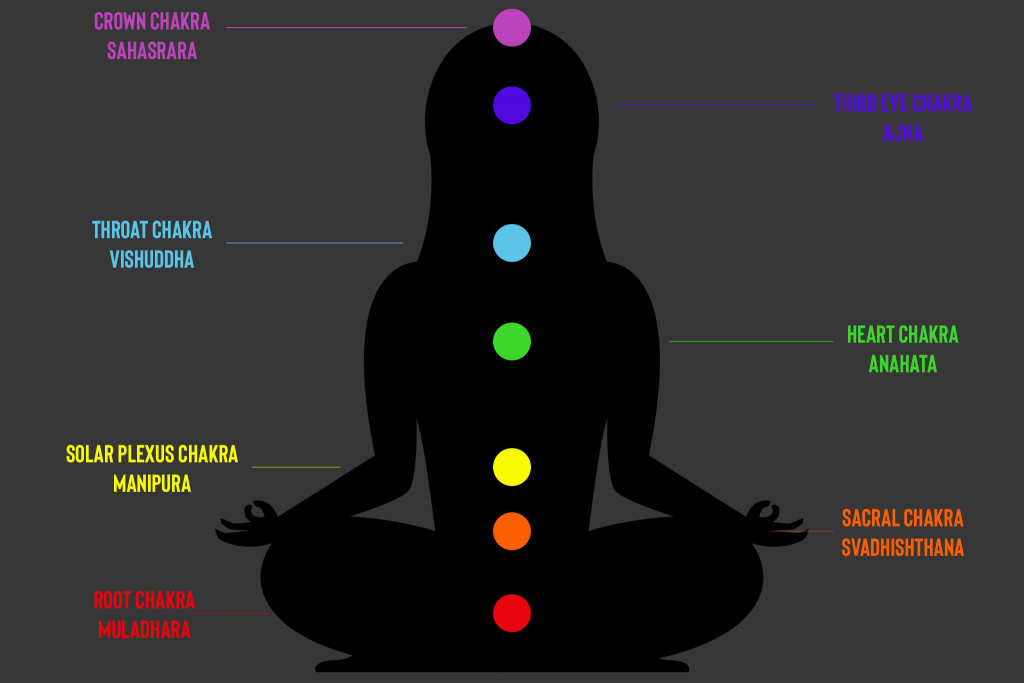
Below is a guide to the seven main chakras and their distinct roles and attributes. You’ll notice that I start with the root chakra and work up through the spine, ending at the crown chakra. If you hear someone refer to first chakra, second chakra, third chakra, and so on, they usually are referring to the root chakra as the first chakra, the sacral chakra as the second, continuing to move upward.
The details below will provide you with a helpful baseline to better understand each chakra as you discover where your energy centers are located and how they function.
Root Chakra
- Sanskrit Name: Muladhara
- Location: Base of the spine
- Color: Red
- Balanced Attributes: Grounded, safe, secure, stable, centered. Like the roots of a tree, this is your foundation. You’re firm in your place in life, and your basic needs are being met.
- Imbalanced Attributes: Anxious, insecure, fearful, excessive negativity, depressed. Energies feel scattered and disorderly. Disconnected and restless.
- Mantra/Sound: LAM
- Gemstones: Onyx, smoky quartz, bloodstone, hematite, obsidian
- Affirmations: I am grounded, centered, and stable. I am rooted and secure. All is really well. I have everything I need. I feel safe in my body.
Sacral Chakra
- Sanskrit Name: Svadhishthana
- Location: Lower abdomen
- Color: Orange
- Balanced Attributes: Creative, joyful, prosperous, sexual, sensual, passionate, energetic.
- Imbalanced Attributes: Withdrawn, tense, insecure, needy, irritable, controlling, manipulative.
- Mantra/Sound: VAM
- Gemstones: Orange calcite, jasper, carnelian, red tiger’s eye
- Affirmations: I am open to the flow of creativity. I am creative, passionate, and inspired. My emotions flow freely in a balanced and healthy way. I live a creative, passionate, healthy life. I deeply respect and honor my sacred body, and I honor my own divine sensuality.
Solar Plexus Chakra
- Sanskrit Name: Manipura
- Location: Stomach/below the chest
- Color: Yellow
- Balanced Attributes: Confident, positive, high sense of self-respect and self-esteem, joyful. This is your source of personal power; you have drive, a positive self image, and feel aligned with your purpose.
- Imbalanced Attributes: Low self-esteem, lack of ambition, lack of purpose, fear of rejection, sensitive to criticism, low energy. If overactive, can also become manipulative, domineering, power-hungry.
- Mantra/Sound: RAM
- Gemstones: Citrine, topaz, yellow tiger’s eye
- Affirmations: I am powerful, strong, and confident. I can achieve anything I set my mind to. Today, I confidently welcome new experiences. I am competent, capable, and strong.
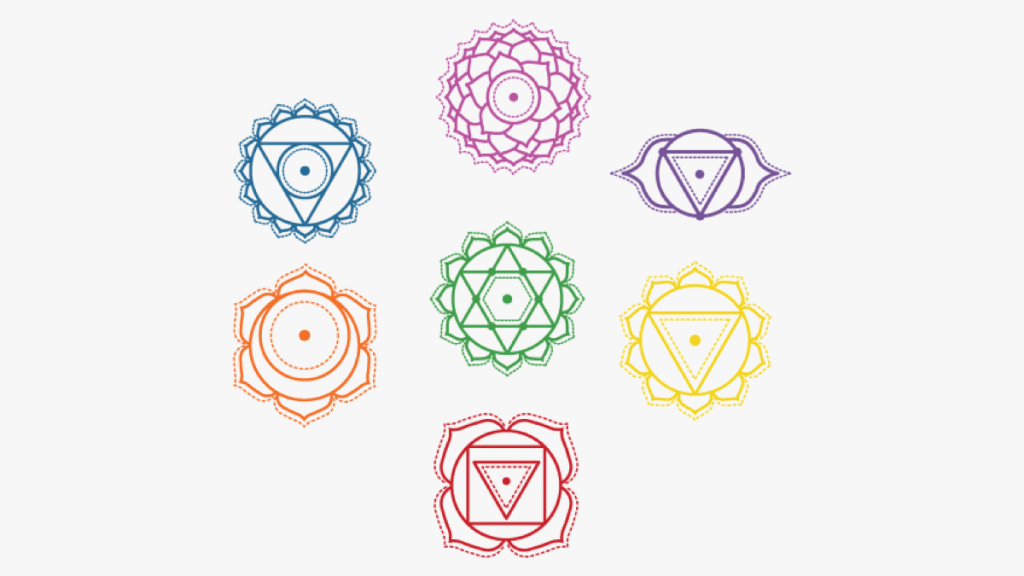
Heart Chakra
- Sanskrit Name: Anahata
- Location: Heart/center of chest
- Color: Green
- Balanced Attributes: Loving, peaceful, compassionate, unconditional love for yourself and others, generous, kind, empathetic.
- Imbalanced Attributes: Depressed, jealous, defensive, judgmental, spiteful. May excessively self-isolate from others. Fearful of intimacy.
- Mantra/Sound: YAM
- Gemstones: Rose quartz, jade, green calcite
- Affirmations: I am loved, loving, and lovable. I love myself unconditionally. My heart is open, loving, and pure. I give and receive love effortlessly and unconditionally. I love and accept myself just as I am.
Throat Chakra
- Sanskrit Name: Vishuddha
- Location: Throat/center of neck
- Color: Light blue
- Balanced Attributes: Able to express yourself verbally and speak your truth. Communicates clearly and effectively. Calm, honest, peaceful.
- Imbalanced Attributes: Shy, withdrawn, dishonest, critical, moody. If overactive, you may interrupt others or not allow others to speak.
- Mantra/Sound: HAM
- Gemstones: Blue lace agate, turquoise, sodalite, aquamarine
- Affirmations: I am able to calmly and effectively speak my truth. I live an honest, authentic, wholehearted life. My voice matters. I express myself clearly and openly. I find creative ways to communicate my self-expression.
Third Eye Chakra
- Sanskrit Name: Ajna
- Location: Center of forehead/between the eyebrows
- Color: Indigo
- Balanced Attributes: Intuitive and connected to your inner knowing. Imaginative, perceptive, openminded, insightful, mentally strong.
- Imbalanced Attributes: Lack of intuition, unimaginative, fearful, unable to focus, close-minded, holding onto limiting beliefs.
- Mantra/Sound: OM or SHAM
- Gemstones: Lapis lazuli, opal, sapphire
- Affirmations: I listen to my inner knowing in the face of uncertainty. I see and think clearly. My mind is strong, open, and clear. I trust my intuition to guide me to making good decisions.
Crown Chakra
- Sanskrit Name: Sahasrara
- Location: Top of the head
- Color: Violet (White is also often associated with this chakra.)
- Balanced Attributes: Spiritual, enlightened, connected to a higher power, connected to oneself. Divine peace and a sense of inner wisdom. Able to surrender to a power higher than oneself. Connected to your soul’s purpose.
- Imbalanced Attributes: Cynical, close-minded, disconnected from yourself, disconnected from a higher power. Lack of faith. Unable to connect with others.
- Mantra/Sound: OM (or silence)
- Gemstones: Selenite, clear quartz, amethyst, diamond.
- Affirmations: I am always divinely and lovingly guided. I release the need to control my life and surrender to a higher power. Today, I trust the path in front of me and allow myself to let go and surrender. I trust my intuition and listen to the wisdom of the universe.
Unblocking and Balancing Your Chakras
Now that you have an understanding of where each chakra is located and their distinct attributes, how exactly do you unblock a chakra?
As you may have guessed, there is no scientific answer here. We all have different methods of unblocking chakras, and what works for one person may not work as well for the other. But at the foundation of these practices, it’s most important to set an intention, lean into the process, commit, and believe.
Also remember that it’s very likely and totally normal to have more than one chakra blocked or unbalanced at a time. While each chakra has a separate location and role, they’re all intertwined and function as one complete system.
Consider this example: If your root chakra is blocked, you may be feeling unstable, insecure, restless, and possibly even unsafe. The root chakra is your very foundation, and without it being open, it would be nearly impossible to feel creative and joyful (sacral chakra) or confident and positive (solar plexus chakra).
Below is a list of several ways you can start balancing your chakras today.
Methods of Balancing Your Chakras
Yoga
There are specific yoga poses associated with each chakra, such as the mountain pose for the root chakra or child’s pose for the third eye. If you want to focus on balancing a specific chakra, you can center your practice on only those poses associated with that chakra. For a more balanced practice, incorporate poses that include all of the chakra points. If you’d like, you can also begin or end your practice repeating the mantra for one of the chakra points. (See the list of Chakras above for each one’s associated mantra/sound.)
Meditation
There are several ways meditation can help with unblocking chakras. You can use a visualization meditation to visualize the energy centers (in each chakra’s corresponding color) brightening, swirling, and glowing. You can also do a mantra meditation in which you repeat the mantras associated with each chakra to clear any blockages and imbalances. See the next section for some links to some powerful guided chakra meditations!
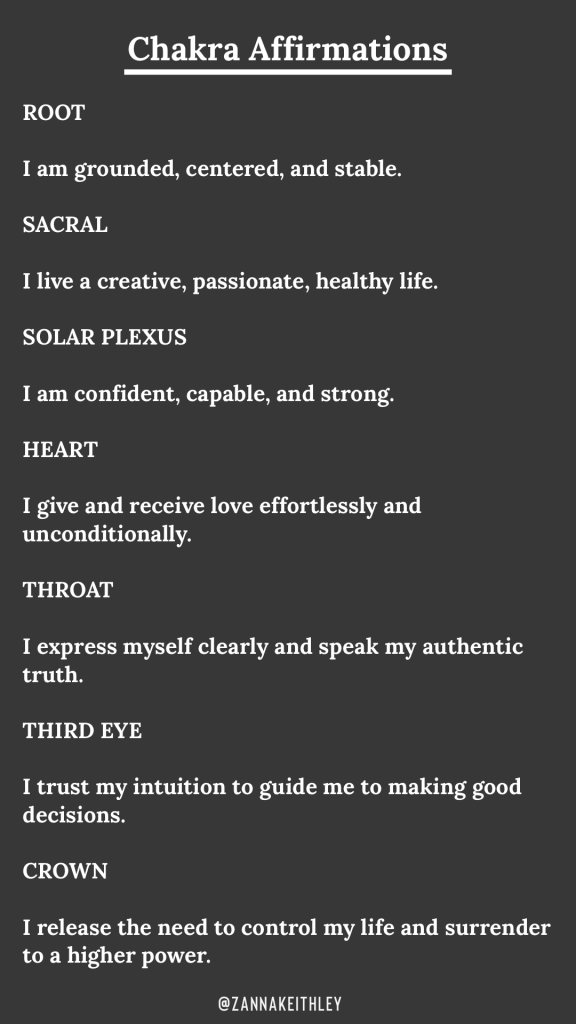
Chakra Affirmations Repeat Affirmations
You can use the affirmations I’ve written for each chakra above or come up with your own powerful affirmations. One of the best things about affirmations is that you can recite them anywhere. Repeat them in the shower, during your morning commute, or even standing in line in the grocery store. You can also combine affirmation practices with other methods on this list, such as meditation, journaling, and even dancing!
Essential Oils
Each chakra is associated with various essential oils that can help calm or stimulate that specific energy center. For instance, you might use cedarwood for your root chakra, lemon for the solar plexus, or peppermint for the throat. To use essential oils to help balance your chakras, apply a small amount of the oil to the chakra point. (While essential oils are generally safe, I would definitely recommend making sure you use a high-quality brand and following the guidelines of the manufacturer before applying anything to your skin. Depending on the type, some oils may require dilution. Definitely do your research and follow up with a health expert if you have any questions before applying.)
Colors
Solar plexus chakra feeling blocked? Wear yellow. Eat a banana. Paint with the color yellow. Make your own homemade lemonade. Find all the yellow items in your home and put them in your line of sight.
Journal
One of my favorite practices is to combine affirmations into my journaling. If you have 10 to 30 minutes to sit down for journaling, write down affirmations that focus on one, multiple, or all of your chakras. Another great practice is to visualize and describe your highest, truest, and most authentic self – the highest version of you when all of your chakras are aligned. The key here is to write in the present tense! Instead of writing, “I see myself as . . .” or “I will be . . .”, write, “I am . . .” Embody that version of your highest self and become that person as you write.
Dance
Dancing is a beautiful way to express yourself and enhance the flow of energy in your body. If you can, try to involve the body part related to any blocked chakras into your dance. For instance, if your heart chakra feels blocked, incorporate more chest movements into your dancing. You can also incorporate colors here as well! Remember to have fun, don’t take yourself too seriously, and surrender to the flow!
Immerse Yourself in Nature
Walk barefoot in the dirt (root chakra, associated with the earth; go swimming (sacral chakra, associated with water); have a (safe) bonfire (solar plexus chakra, associated with fire); take a cleansing walk as you focus on breathing in the fresh air (heart chakra, associated with air). If multiple chakras feel blocked, getting back to your foundations (nature and the earth) is one of the best ways to clear any blockages.
Food
Eat a food associated with the color of the chakra (i.e. a red apple, green spinach, orange carrot). Try to aim for something healthy, unprocessed, and nutrient-dense.
Crystals
You can use crystals associated with each chakra to activate that energy center. Some simple practices are to hold the crystal over the chakra point for three to five minutes, lay the crystal on the body for an extended amount of time, or to meditate with the crystal by either holding it or laying it on the body (if you’re laying down). If you want, you can even place all seven crystals on each chakra point at once while you’re laying down.
Express Your Creativity
Embrace ways to express your creativity, such as drawing, painting, dancing, singing, working with clay, writing poetry, or however you like to unleash your inner creative!
Chakra Meditations
The following meditations can all be found on the Insight Timer app (no affiliation). This is a free app that offers over 55,000 meditations and music tracks (all completely free). You can read more about why I choose this app as well as learn about different meditation practices for beginners here.
- Chakra Waterfall Meditation by Jessie Arielle Smith (6 minutes)
- Chakra Balancing by Kiran Chugani (8 minutes)
- Personal Transformation: Energy Centers Chakra Discovery by Dexter and Alessandrina (12 minutes)
- Guided Chakra Healing Meditation by Healing Haus (19 minutes)
- Sacral Chakra Therapy by Cory Cochiolo (19 minutes)
- Chakra Tune-Up by Gemma Clarke (21 minutes)
And that’s a a guide to chakras for beginners! Be sure to check the links at the top of this post to learn more about the individual chakras. Have any questions about chakras? Or have you discovered any practices that have helped you activate and balance your chakras? Leave a comment below to ask a question or share your experiences!

Chakras for Beginners: Unblock Your Chakras Today 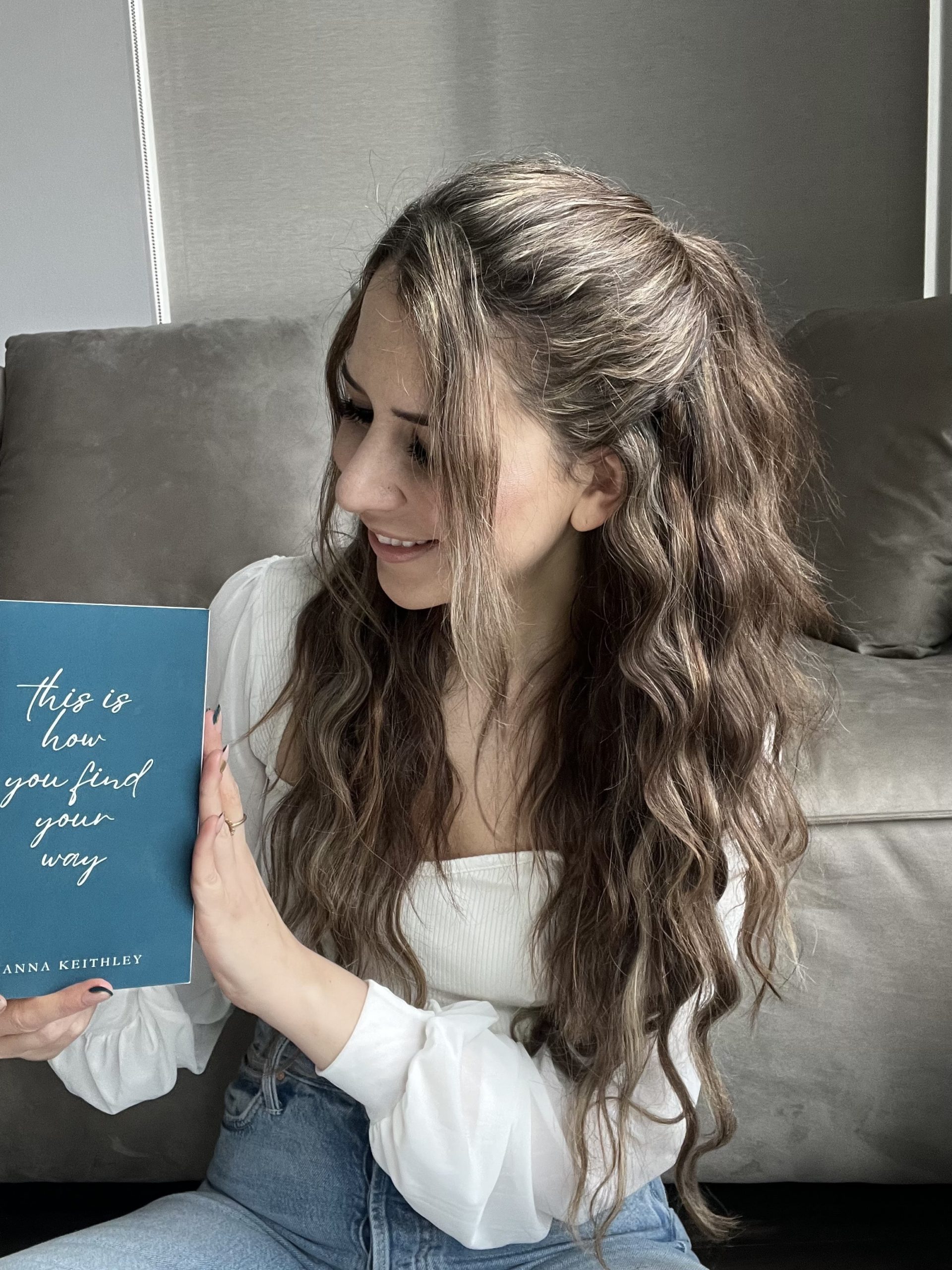
Zanna Keithley is an author, poet, and social media content creator who writes short prose dedicated to inspiring readers to follow their dreams, trust their intuition, and create beautiful and fulfilling lives. You can find her original writing on Instagram @zannakeithley.
-
Meditation Practices For Beginners
Below, you’ll find seven types of meditation practices for beginners, including mindfulness, body scan, visualization, and chakra meditations. I also provide you with links to guided meditations you can try at your home today.
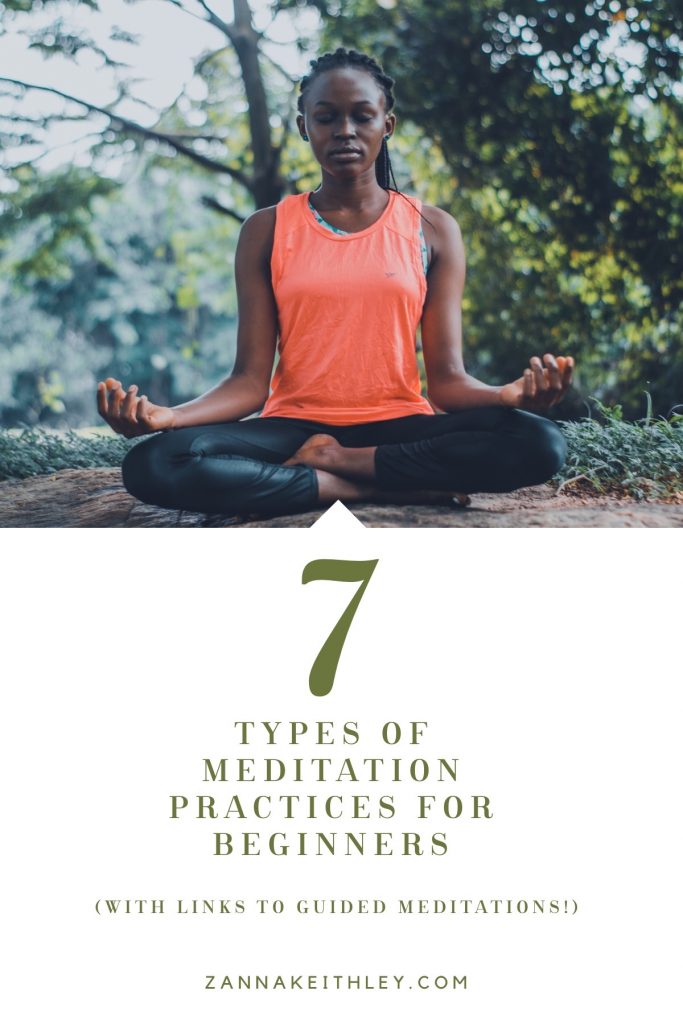
Pin this for later! 7 Types of Meditation Practices for Beginners Meditation
If you’ve never meditated before, the thought of starting a meditation practice can feel kind of daunting. How do you start? When’s the best time to meditate? How are you supposed to sit, and what the heck do you do with your hands?
Here’s my answer to just about every question when it comes to starting a meditation practice: start where you are with what you have.
There will never be a perfect time to start meditating, and yet, it is always the perfect time to start meditating. You don’t need any special equipment. You don’t need to wait for a certain time of day. And you definitely don’t need to cultivate the special superpower of being able to clear your brain of thoughts. At most, you just need yourself and a few minutes of quiet.
Below, I’ve listed seven of the best types of meditation practices for beginners. While you can definitely choose any of these in any order, I’d recommend starting with mindfulness meditation, as that lays the foundation for just about every other type of meditation.
At the end of each section, I link to associated meditations on the Insight Timer app. I have absolute no affiliation with the Insight Timer app; it’s just my personal favorite for meditation. While I’ve linked to the meditations on Insight Timer’s webpage, I definitely recommend downloading the app on your phone for easier access.
Of course, if you find a different app that you want to use, go for it. You can even try multiple apps and see which one you like best. While you don’t need an app to meditate, it’s definitely helpful when first starting out.
Meditation FAQs
Before I get into the different types of meditation practices for beginners, here are some answers to a few more common questions that you may have.
What time of day should I meditate?
When I first started, I thought I needed to meditate as soon as I woke up because that’s what I had read in articles and blog posts. Meditating first thing in the morning is a great practice. But so is meditating an hour after you wake up. Or two hours later, or at lunch time, or before dinner, or after dinner, or before bedtime. Basically, anytime you want.
There is no right or wrong time to meditate. Do it when you have time and when it feels right for you.
How should I sit when I meditate? And what do I do with my hands?
In many of the guided meditations, the teacher will give you some instructions on how to sit, usually giving you a couple options depending on what’s most comfortable for you. If you’re on the floor, you can sit cross-legged with your hands on your knees and your palms facing up or down. If you’re on a chair, you can sit with your back straight, hands on knees, legs uncrossed.
And it may seem weird, but you can even lay down as well. It took me a while to try a meditation laying down, but it truly gave me a different and enriching experience.
Now, I’ll choose different positions depending on how I feel and what kind of meditation I’m doing.
What if I can’t clear my mind of thoughts?
This is one of the biggest misconceptions of meditation and why many people believe meditation isn’t for them. If you listen to just about any meditation teacher, they’ll tell you the same thing: meditation is not about clearing your mind of thoughts. If it was, I’m not sure any of us, not even the most advanced meditators, would ever succeed. The last thing we want to do is suppress or evade our own thoughts.
At its heart, meditation (especially practices rooted in mindfulness) is about non-judgmental observation, conscious awareness, and gently rooting ourselves in the present moment. When you’re meditating and your mind strays, don’t berate or speak down to yourself. You are not “wrong” for having a thought.
When I first started, I’d use the phrase, “Ah, I’m having a thought.” I imagined I was observing something curious and interesting but that I didn’t need to hold onto. Once I recognized the thought, I’d release it and come back to focusing on my breath.
Allow yourself to become an objective observer of your own mind and accept any thoughts you have. Then, gently guide your brain back to the present moment.
7 Meditation Practices For Beginners
Mindfulness Meditation
What exactly is mindfulness meditation? First, let’s look at the word mindfulness. Have you ever gotten so lost in thought that you’ve forgotten where you are or what you’re doing? Do you find yourself thinking about an event from the recent past and going over all the details? Do you replay old scenes over and over again, getting pulled into those past emotions? Or what about making up scenarios and obsessively playing out scenes of the future that haven’t even happened?
Can you imagine living a life where you’re always living in the past or future—never in the present moment?
This is where mindfulness comes in.
Mindfulness is conscious awareness of the present moment through an unattached, objective, and unemotional lens. Mindfulness allows you to notice when your thoughts have strayed and gently return them to this present moment. The key here is that you don’t judge yourself for your straying thoughts. You can simply notice that you’re having a thought and then release it without judgment.
A common analogy is to think of it as clouds passing over you in the sky. Imagine you’re lying on the ground looking up at a perfectly blue sky, and a cloud passes over you. “Look, there’s a cloud,” you think. Then it floats out of your vision, and you let it go without attachment.
That’s kind of how it works with your thoughts. In mindfulness meditation, you’re not trying to rid your head of thoughts; you simply notice with objective awareness when you’re having a thought, and then you let it pass over you and return to this present moment.
So how exactly do you stay grounded in this present moment?
Most often, it’s through your breath. In many mindfulness practices, you simply keep your focus on your breath coming in and going out of your body. And when you find your thoughts going astray, you return your focus to your breath.
In the beginning, it might help you to use numbers or a counting system. For example, for every inhale, you may think a silent one, and for every exhale, you think two.
Or you can count to ten: every inhale is an odd number and every exhale is an even number. When you get to ten, you return back to one and start all over again.
Insight Timer Guided Meditation Practices for Beginners:
Kate James’ Mindful Awareness Meditation (just under 10 minutes) gently guides you through the act of bringing mindful awareness to your present experience. This is a really wonderful meditation for guiding you through the process of becoming an objective observer of yourself.
Laurie J. Cameron’s Mindful Breathing With Compassion is a beautiful 10-minute practice that combines mindful breathing with a loving-kindness practice.
Body Scan Meditation
Body scan meditation is an extension of mindfulness in that it allows you to consciously notice how different parts of your body are feeling in the present moment without judgment.
In a body scan meditation, you start at your feet and make your way up, paying attention to the way each body part feels. (If you prefer, you can start at your head and move downward.)
Are you carrying tension in this particular body part? Are there any feelings or sensations? Don’t attach any value to your answers. For instance, if you’re feeling tension in your shoulders, don’t label this as bad. Just notice.
Now, there are differing beliefs on what a person should do next.
For some, the act of simply noticing is the goal of this meditation. The reason is that this grounds you in the present moment and cultivates a sense of mindfulness.
Others go one step further by consciously releasing the tension they perceive. One way to do this is by breathing into the tension. As you exhale, visualize the tension leaving your body and evaporating into the air. Another technique is to tense up your muscles and then relax them. You might also visualize a wave of relaxation flowing through your body.
While a body scan meditation can be done anytime, it’s especially beneficial in helping you to relax at nighttime. If you find yourself lying in bed at night unable to fall asleep, don’t try to suppress your thoughts. Instead, you can do a body scan meditation right there in your bed. Simply relax your muscles and release the tension from each part of your body.
Insight Timer Guided Meditation Practices for Beginners:
Wendy Chan’s Mindful Body Scan (just under 11 minutes) is a simple but powerful meditation that gently guides you through noticing the different sensations in your body without any judgment or labeling the sensations as good or bad.
Tara Brach is one of the most well-known meditation teachers both on and off the Insight Timer app. Her Basic Body Scan & Breath Awareness (11 minutes) is a perfect meditation for beginners.
Loving Kindness Meditation
The goal of a loving kindness meditation is to extend kindness toward yourself and others in your life. In the first loving kindness guided meditation I ever tried, I was instructed to visualize I was standing in front of myself. I looked myself in the eyes, and I repeated these words:
May you be well . . . may you be happy . . . may you live with ease . . . may you know you’re always loved.
Then, I was instructed to picture someone I loved and cherished deeply standing in front of me and to recite those same words.
Next, I visualized someone who I sort of, kind of knew but who I didn’t have any positive or negative feelings toward, such as a grocery store cashier or a neighbor down the street. Again, I envisioned looking them in the eyes and repeating those words. T
hen, I was guided to envision someone I felt negative feelings toward, to look this person in the eyes, and to recite these same kind and loving words as well.
And finally, I extended these words to the entire universe in which I am connected.
There are many variations of a loving kindness meditation, but at their core, they all promote deep feelings of love and compassion.
One great thing about this practice is that you don’t have to be sitting alone in a dark room to practice loving kindness. If you’re a beginner, it helps to do a few guided loving kindness meditations to understand the process and follow some of the different variations of this meditation. Soon, though, you may find different opportunities to engage with these practices.
For instance, when you’re getting ready in the morning and find yourself feeling stressed about the day ahead, you can look at yourself in the mirror and repeat words of loving kindness. If you have a boss who causes you to feel negative emotions, you can visualize looking them in the eyes and repeating these same words. This doesn’t mean that you agree with or accept the things you may not like about them. What it means is that you have the power to realign with your highest self and to choose love over resentment, anger, or pessimism.
Insight Timer Guided Meditation Practices for Beginners:
I love Vanessa Michele’s Loving Kindness For Yourself & Others (10 minutes) to cultivate a sense of love and compassion for yourself and the world around you.
Camilla Sacre-Dallerup’s Loving Kindness and Compassion (10 1/2 minutes) meditation is a beautiful variation of a traditional loving kindness meditation.
Visualization/Guided Imagery Meditation
In a visualization meditation, you focus on a specific visual in your mind’s eye. If you’re doing a guided meditation, your instructor will gently guide you through a series of visuals that you follow in your mind.
At its foundation, visualization meditations are still rooted in mindfulness. When you’re practicing a visualization meditation, you may find your mind wandering, thinking about the day ahead or noticing the very loud garbage truck outside your house. It’s okay if your mind wanders. Just notice, then allow yourself to return to the visualization.
So in a visualization meditation, what exactly are you visualizing? This is where, if you’re someone who likes concrete directions and specific answers, you may get frustrated. Because the truth is, there’s an infinite amount of scenes you may visualize in your mind’s eye.
For instance, I’ve done a lot of manifestation visualizations. Some of these guide me through visualizing a perfect day in my dream life, while others have taken me to golden waterfalls where abundance is infinite and always flowing. I’ve also done visualizations where I’ve floated down a gentle river and allowed myself to flow effortlessly with the water, trusting where the water takes me. I’ve visualized journeys into my own heart where I explore all of the dark and light inside of me. And I’ve also visualized standing in front of a beautiful ocean and releasing all of my hopes and dreams into the sea, entrusting the water with all of my heart’s desires.
A key for many visualization meditations is to not only see these scenes playing out in your mind but to experience them with all of your senses. If you find this to be difficult at first, it’s okay. This doesn’t mean you’re doing anything wrong or that you’re not “cut out” for this type of meditation.
I encourage you to open yourself to the process and simply let it be whatever it is. It doesn’t have to be a big or overwhelming thing; I’ve experienced many incredible guided visualization meditations that were only ten minutes long.
- Related: How to Visualize (For Meditation)
Insight Timer Guided Meditation Practices for Beginners:
Carrie Suwal’s Attracting All That You Desire (10 1/2 minutes) is a powerful meditation for manifestation that includes both visualization and affirmations.
My overall most-played meditation on the Insight Timer app is Rishika Anya’s Breaking Through Limiting ThoughtForms (just under 11 minutes). This is a powerful visualization meditation to help you break through limiting thoughts that no longer serve your ultimate wellbeing.
Affirmations Meditation
Affirmations meditations are generally pretty straightforward. These are guided meditations in which a teacher recites a series of affirmations, and you repeat these affirmations, either silently or aloud.
Often, a meditation dedicated to reciting affirmations will focus on a specific topic. Some of the guided affirmation meditations you may find include affirmations for abundance, self-love, worthiness, and health. You can also find morning affirmations specifically dedicated to cultivating a positive mindset for the day ahead. There are even affirmation meditations dedicated to specific topics such as job interview or giving a big speech.
Usually, the teacher will advise you on how to follow along with these affirmations. Sometimes, instead of repeating them, you simply breathe into each one and feel them into your being.
Note that you may encounter affirmations in other types of meditations as well. For instance, in a guided visualization meditation for manifestation, the teacher may include affirmations to affirm your worthiness of beautiful abundance in your life.
Insight Timer Guided Meditation Practices for Beginners:
Liza Colpa’s Manifestation & Affirmation Practice To Gain Confidence (12 minutes) is a perfect one for utilizing both visualization and affirmations to guide you in your personal growth. I absolutely love all of Liza’s meditations, so if you like this one, I’d definitely recommend checking out her others as well.
Karen Wang’s Words of Affirmation (10 minutes) beautifully guides you through a series of affirmations for self-confidence and empowerment.
Chakra Meditation
Chakras are your body’s spiritual energy centers. When our chakras are unblocked, energy flows freely within our body, mind, and spirit, and we feel a sense of alignment and peacefulness. When a chakra is blocked, we feel imbalanced, and this often manifests in negative physical, emotional, and spiritual symptoms (anxiety, creativity blocks, and digestive issues, for instance).
Chakra meditations usually focus on unblocking any blocked chakras so energy can flow freely. Some meditations will focus on increasing awareness and unblocking one specific chakra, while others do an overview of all the chakras. Below is a list of the chakras, their associated colors, and their locations within your body.
If this is your first introduction to chakras, I’d recommend starting with a meditation that guides you through all of the main chakras. Once you feel like you have a good foundational understanding of chakras, you can search for guided meditations that focus on unblocking a specific chakra.
Insight Timer Guided Meditation Practices for Beginners
Dexter and Alessandrina’s Personal Transformation: Energy Centers Chakra Discovery is a 12-minute guided meditation that leads you through each chakra in your body and its associated color. It’s a really great one for beginners!
Carrie Suwal, who I mentioned above in the Visualization Meditation section, has some beautiful chakra meditations that focus on trauma, depression, healing the heart, anxiety, and overall balancing. Note that most of these are a little longer than the others that I’ve listed, but if you’re drawn to gentle voices like I am, I think you’ll really love Carrie’s soft and tenderhearted guidance.
Mantra Meditation
In a mantra meditation, you focus on a word or a single syllable (or sometimes a phrase) for the entirely of the meditation. If you focus on a word, this word has no meaning. You wouldn’t say something like love, kind, peace, or any other word you have a connection to. Often, this word may not even be in the same language you speak. Some common examples of syllables or words you may repeat include om and ram.
(Okay, because I’m one that doesn’t like labeling anything in meditation as “right” or “wrong,” I concede that there are mantra meditations out there that will use a word that holds meaning to you, such as love or peace, and while you may receive a different type of experience, there is nothing inherently bad about this.)
During your meditation, you’ll repeat your chosen mantra (or the one your instructor has provided for you) over and over again. There is no rush here. Keep a smooth, relaxed, even tone. Focus on the sound of the mantra, and when your mind wanders, bring yourself back to the sound, just as you would in a standard mindfulness meditation practice.
As in all of the types of meditation listed here, you’ll likely find variations of this practice depending on the teacher. I’d recommend starting out with a guided meditation for this one, but after a couple times, this is one type of meditation that you may feel more comfortable trying without guidance.
Insight Timer Guided Meditation Practices for Beginners:
One of the first mantra meditations I ever tried was Dexter and Alessandrina’s Ganesha Mantra Meditation for Removing Obstacles (14 minutes). I’d recommend trying out some of the other meditation practices I’ve listed above before this one, but when you’re ready to try something different, this offers a really unique and powerful experience.
Hannah Leatherbury’s Mantra of Peace is nine-minute meditation that uses a phrase in the Sanskrit language that translates to “Lead me from the unreal to the real; Lead me from darkness (ignorance) to light (wisdom); Lead me from death (limitation) to life everlasting (freedom).” She also has a beautiful five-minute Mantra of Wholeness.

Pin this for later! 7 Types of Meditation Practices for Beginners 
Zanna Keithley is an author, poet, and social media content creator who writes short prose dedicated to inspiring readers to follow their dreams, trust their intuition, and create beautiful and fulfilling lives. You can find her original writing on Instagram @zannakeithley.
-
10 Science-Backed Health Benefits of Meditation
If you’re thinking about starting a meditation practice or interested in finding out how your current practice is benefitting you, read below for the science on 10 of the most significant health benefits of meditation.
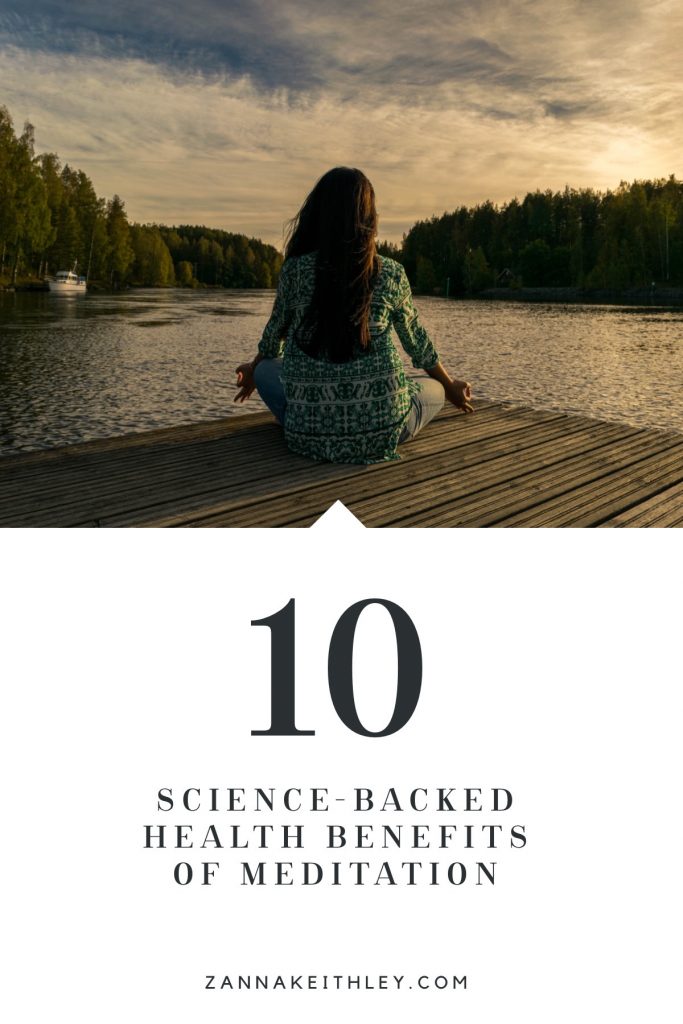
Pin this for later! 10 Science-Backed Health Benefits of Meditation Meditation
When I decided to try meditating for the first time, I was skeptical. Like many others, I was filled with doubts about whether I was even capable of meditating.
No way can I empty my brain of thoughts.
I’ll try it, but I’m not actually going to be good at it.
So I’m just supposed to do . . . nothing?
But through my meditation journey, I’ve learned that the goal of meditation isn’t to empty my brain of thoughts; the goal of meditation (mindfulness meditation, specifically) is to recognize (without judgment) when my thoughts have strayed and gently return to this present moment, over and over again.
Through this practice, I have learned how to become an objective observer of myself.
Which is a pretty big deal, after spending most of my life being a brutal self-critic.
To transform my default thoughts from inner bully to non-judgmental onlooker has been, well, pretty incredible.
In fact, these days, when I step out of my objective observer role, it’s to bring out my inner cheerleader. You see, most of my thoughts about myself now revolve around my own inherent worthiness. I now know I’m capable and deserving of living most honest and beautiful life I envision for myself.
I never imagined this path for myself when I reluctantly meditated for the first time several years ago.
However, I know that emphatic claims from family, friends, bloggers, and Instagram influencers can only go so far. Most of us need proof that meditation is so much more than just 10 minutes of sitting in silence.
That’s where the science comes in.
When I decided to tackle this subject, I had no idea what I’d find. Are there actually legitimate studies on the science-backed health benefits of meditation?
Yes, it turns out. Lots of them.
To say that I was blown away by the results would be an understatement; there are 1000s of studies and articles out there on the subject. (If you type “meditation benefits” in Google Scholar, you’ll get nearly 600,000 results.)
Below, I’ve compiled a list of 10 of the most compelling science-based health benefits of meditation.* These benefits come from multiple peer-reviewed studies and scholarly articles, and I’ve included links if you want to read deeper into each benefit.
*Please note that this content is for informational purposes only. It is not meant to substitute for medical advice, diagnosis, or treatment. If you have any questions regarding meditation and your personal health, please consult your doctor.
Health Benefit #1: Decreases Stress
This is a big one, and I list it first because decreased stress itself results in so many positive health benefits: improvements to your immune system, sleep quality, and weight management, to name a few.
First, I actually want to take a step back for a moment and say this: a little bit of stress in our lives isn’t actually such a bad thing.
Not that long ago, stress prompted our ancestors to run from the saber-toothed tigers. And now in our current world, stress propels us to swerve out of the way from that ongoing car. At its foundation, stress is meant to keep us alive.
But our bodies aren’t wired for the persistent stress we encounter today in work and our personal lives. And that’s why stress has become synonymous with a four-letter word in western culture.
But meditation can help.
Numerous studies have produced findings showing that meditation has a positive impact on a person’s stress levels.1 2 3 Studies even show that the use of a meditation app on your smartphone can significantly improve one’s stress levels. These apps may also generate an overall improvement in well-being, job strain, and perceptions of workspace social support.4 (Note that the meditation app Headspace offered free use of the app over the eight-week period in which the study occurred. However, it did not have any involvement in the actual study or conclusions formed.)
One study evaluated 351 full-time working adults with varying levels of meditation experience. The researchers found that those with more experience had higher levels of emotional intelligence, less stress, and better mental health.5
Health Benefit #2: Improves Mental Health
“Mental health” is a blanket term for one’s overall well-being, including our psychological, behavioral, and emotional states. Often, studies on the mental health benefits of meditation specifically focus on depression and anxiety.
One review that assessed 47 clinical trials and 3,515 total participants found evidence of improved anxiety and depression in patients over a period of just 8 weeks.6
Another study showed that meditation retreats resulted in reduced depression and anxiety as well as improved overall quality of life in its participants.7
Another two-year study followed 311 bipolar disorder II patients and found that meditation had positive effects on participants’ guilt, mood, and and feelings of helplessness.8
And lastly, another review found that meditation practices have been shown to be effective in reducing one’s anxiety symptoms.9
Health Benefit #3: Improves Immune System
A study published in the peer-reviewed journal Psychosomatic Medicine found that a mindfulness meditation practice can positively change immune function.10 Various other reviews and studies support these findings.11 12
One reason why meditation positively affects the immune system links back to #1 on this list: stress. Stress is known to suppress the immune system and can wreak havoc on the body. This results in chronic fatigue, metabolic disorders, and increased risk of heart disease, among other physical issues. By decreasing stress, a regular meditation practice can help your immune system work properly.
Health Benefit #4: Improves Brain Health
When it comes to our brain health, there’s promising evidence showing that meditation can have a significant positive impact.
One study found that meditation increased overall brain network integration. 13 And good news if you’re a non-experienced meditator: another study found that non-experienced meditators practicing just 13 minutes of meditation every day showed increases in mood and focus as well as increased working memory and recognition memory. And to top it off, these short meditation sessions produced similar positive behavioral effects as longer sessions. 14
Finally, another review assessed 13 separate studies, which all reported evidence of significant increases in grey matter in meditators’ brains.15 Grey matter is the outermost layer of the brain. It plays a vital role in how we function normally every day. While there’s still a lot of research to be done, this is compelling and hopeful evidence that meditation may positively impact and even offset neurodegenerative diseases.
Health Benefit #5: Decreases Blood Pressure
Interestingly, transcendental meditation often gets the spotlight when it comes to showing positive impacts of meditation on one’s blood pressure. One study looked at nine clinical trails and found evidence that transcendental meditation could significantly reduce systolic and diastolic blood pressure in a “clinically meaningful” way. 16 Another study found that a transcendental meditation practice can result in decreased blood pressure. The researchers noted these findings to be comparable to weight loss and exercise. 17
But it’s not just transcendental meditation that provides these positive results: another study found that non-transcendental meditation can also produce positive effects on blood pressure. 18
Health Benefit #6: Lengthens Attention Span
If you’re in school or have a highly attentive job, this one’s a big deal. One study found that a meditation practice helped to enhance nursing students’ attention span. It also reduced stress and increased mindfulness.19
There’s also good news if you’re unsure whether you want to commit long-term to a meditation practice. Another study followed participants for just five days and found they showed significantly improved attention spans (as well as decreased stress) when they incorporated a meditation practice into their routines. 20
Health Benefit #7: Improves Chronic Pain
Multiple studies provide evidence that mindfulness meditation can improve a person’s chronic pain symptoms.21 22 Additionally, meditation has shown to improve the psychological effects associated with chronic pain. This includes depression and overall quality of life. 23
Side note: If you suffer from chronic pain, check out the meditations on the Insight Timer app specifically created for those who are experiencing constant and extreme pain. Often, the teachers who release these meditations have experienced or are experiencing similar hardships. I know it seems impossible that meditation can make this pain go away, but know that these teachers see and feel your suffering. They’re there to guide you to a place where this pain no longer becomes your identity, and you can live in a space of deep calmness.
Health Benefit #8: Improves Sleep Quality
If you’re someone who struggles with getting a restful night’s sleep, meditation may help. One study looked at adults with moderate sleep disturbances and found that mindfulness awareness practices produced better results in improving the participants’ sleep than sleep hygiene education and suggests that these practices could be used to help remediate sleep problems and thus improve overall quality of life. 24
If you experience more prominent sleep problems, there’s some promising news for you, too: the American Academy of Sleep Medicine released findings showing that a meditation practice can be an effective treatment for insomnia. 25
Health Benefit #9: Increases Lifespan
Researchers at UC San Francisco found evidence that meditation may slow the rate of cellular aging. 26 But how exactly does that work? First, we need to understand the function of telomeres. Telomeres are the cap at each end of a chromosome that protects our chromosomes from deterioration. Over time, telomeres shorten and cause our cells to age. This is where you might have heard the concept of biological aging. When you hear that a 50-year-old is biologically only 30 years old, this is because the length of their telomeres is more aligned with what you would typically expect to see in a 30-year-old.
Constant stress is known to impact telomere length negatively. However, the researchers at UC San Francisco found that certain forms of meditation can have beneficial effects on telomere length and increase positive state of mind, thus preventing factors such as stress and depression from shortening telomere length.
Health Benefit #10: Enhances Self-Awareness
While my personal experience is only anecdotal, this is one that I can wholeheartedly speak to. As I mentioned in the intro, meditation has helped me to become an objective observer of myself. Do I still have negative and self-defeating thoughts? Absolutely. But instead of letting myself become consumed by those thoughts, I’m able to step back and notice when they’re happening. And then, after I notice without judgment, I have the power to redirect my thoughts to a more positive place.
The science on this topic suggests I’m not completely off-base for crediting this newfound self awareness to my daily meditation practice. There have been numerous studies and reviews that speak of the positive effect meditation has on one’s own self-awareness. 27 28 29 Another study shows that a mindfulness practice may help reduce “cognitive rigidity,” which allows for more creative problem solving. 30 By becoming more self-aware, you’re able to step back and see the bigger picture, thus allowing you to form different, more creative solutions rather than being blinded by your own past experiences.
Conclusion
While the list above includes ten of the most significant health benefits of meditation, there’s even more evidence out there showing that meditation has the potential to improve our overall mental, physical, and emotional well-being. On top of this (and something I can personally vouch for), it can also enhance one’s own self-image and self-worth. There’s still a ton of research to be done, but the research on the health benefits of meditation that has been done has been extremely promising and overwhelmingly positive.
Discover More About Meditation
- 7 Types of Meditation Practices for Beginners
- What is Mindfulness? Plus 15 Powerful Mindfulness Quotes
- A Beginner’s Guide to Chakras

Pin this for later! 10 Science-Backed Health Benefits of Meditation 
Zanna Keithley is an author, poet, and social media content creator who writes short prose dedicated to inspiring readers to follow their dreams, trust their intuition, and create beautiful and fulfilling lives. You can find her original writing on Instagram @zannakeithley.
-
9 Powerful Tools for Manifesting Your Future
You have everything you need within you to create a beautiful and fulfilling life—here’s nine manifesting tools for creating the life you love.
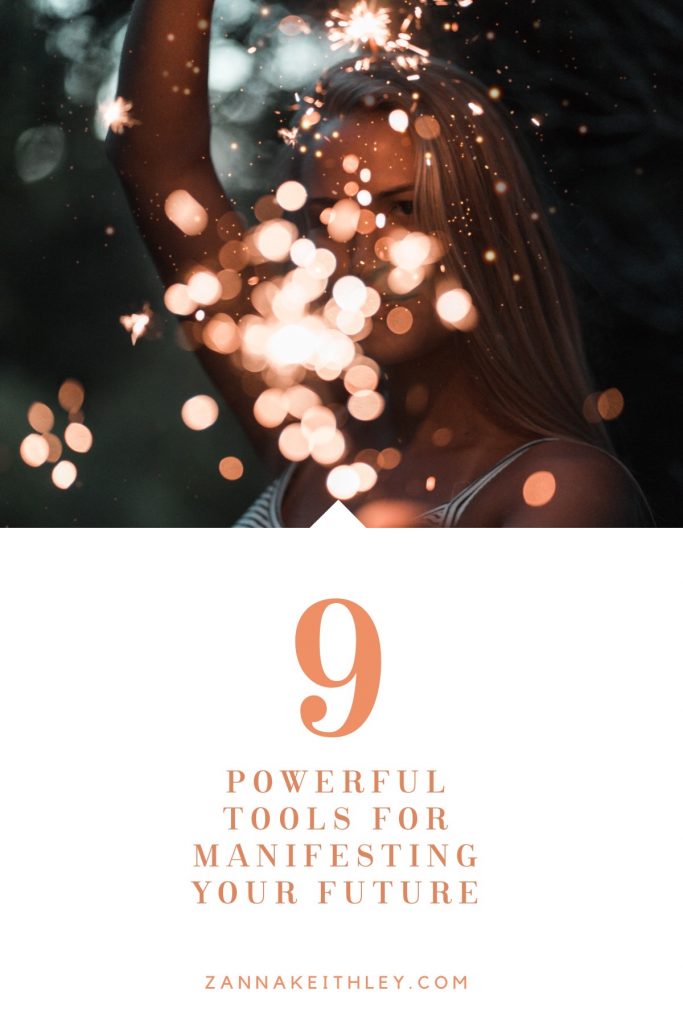
Pin this for later! 9 Powerful Tools for Manifesting Your Future What is Manifestation?
Manifestation is, by its simplest definition, creation.
You have the ability to create your life through your thoughts, actions, and feelings. You create through your deepest held beliefs. You create through the perspective you bring to every experience and situation.
When you consciously tap into your innermost power to create, you realize that the power to create a life that aligns with your deepest purpose and feels beautiful and fulfilling—the life you envision for yourself when you close your eyes—exists within you.
To expand on the definition a bit, to manifest something means to visualize your dreams and desires and to vibrate at the frequency of your desires as if they’ve already come true.
Essentially, this means that you align your thoughts, beliefs, and feelings with the thoughts, beliefs, and feelings of your highest self—the innermost you. The you who feels infinitely and unconditionally loved, abundant, beautiful, free, and at peace.
Manifestation is intertwined with the Law of Attraction, which states that like attracts like; the vibrations, beliefs, and emotions we put out into the world are what we receive in our lived experiences.
So how does this work? Below, you’ll find the nine essential tools you need to get started.
These tools as well as these manifestation games are a good place to start when you’re starting your manifestation journey. And you can get the full manifestation blueprint in my in-depth guide on how to manifest something.
Tools to Manifest Your Future
Tool #1: Visualization
To create the life you desire, you first have to know what you want.
If there were no limits or constrictions, what would you be doing in your dream life? Where would you live? Who would be surrounding you? What primary emotions would you feel? What does your highest and most authentic self look like? How does this version of yourself move throughout their day?
Visualization is a tool you can use to connect your present-day self with the version of you who is living the life you imagine for yourself when you close your eyes.
My favorite way to describe it is intentional daydreaming.
When you visualize, you directly connect your present-day self with the you who is already living the life of your dreams. It’s not just about seeing your dream life—when you visualize, you use all of your senses to simulate the experience of living your dream life in the present moment.
One of the best examples of how powerful visualization can be is how Olympic swimmer Michael Phelps incorporated it into his training routine to become the most decorated Olympian of all time.
It’s no secret that Phelps put in many long hours of practice, sometimes without a single day off for years at a time. But what you may not know is his commitment to practicing visualization.
For months before a big event, Phelps would spend two hours a day undergoing mental rehearsal to prepare for an upcoming race. He visualized both the good and the bad, and he would see himself overcoming obstacles to win the race.
By the time he actually dove into the pool the day of the race, he had already swum it hundreds of times in his mind.
So why do elite athletes and performers commit so much time to visualization? It may have something to do with the way our brains work. You see, your brain can’t actually tell the difference between the powerful visualization and reality; it has the same activity whether you’re physically doing the action or envisioning it in your mind.
How to Visualize
You don’t need to be a world champion athlete to utilize visualization to enhance your life. Set aside 10 minutes every day to close your eyes, and visualize yourself achieving your goals.
What does it feel like? Feel the emotions that align with your dream life. Utilize all your senses. See yourself living that dream life. Listen, touch, taste, smell.
Like Phelps, you can even imagine some worst-case scenarios and visualize yourself overcoming these obstacles.
For me, meditation has been the best way to establish a visualization practice. Here are some of my favorite guided meditations for manifestation and an in-depth guide on manifestation meditations.
To illustrate the power of visualization, watch this Tedx talk by Ashanti Johnson on how her daily practice of visualization changed not only her life but ultimately the lives of her community through her work.
Tool #2: Gratitude
One of the most profound ways to create the life of your dreams is to feel grateful for what you already have.
By vibrating at the frequency of gratitude, you invite more beautiful people and opportunities and experiences into your life to feel grateful for.
Gratitude is truly the foundation of the Law of Attraction. When you view your life through the lens of gratitude, you start to notice the abundance that already exists in your life. This deep, wholehearted feeling of appreciation is like a magnet that calls in more of what lights you up and makes you feel grateful every day to be alive.
How to Practice Gratitude
What I love about this is there are so many ways to practice gratitude. Viewing your life through the lens of appreciation is one of the simplest yet most powerful ways to begin changing both your inner and outer worlds.
I’ve written a whole blog post on how to practice gratitude for the Law of Attraction. Here are a few of my favorite ways to build my life on a foundation of appreciation and abundance:
- Keep a simple daily gratitude journal. In it, you can write three things you’re grateful for each day. It helps to include a why statement, like, “I am grateful for my home because it make me feel secure and warm, it’s my safe space to come back to after a long day.” You can also use your gratitude journal as an evening reflection journal and write down some of the things that happened throughout the day that you feel thankful for. Even the simplest and tiniest little wonders, like the cloud you saw in the sky that was shaped like a cat, is an opportunity for gratitude.
- Recite positive affirmations based in gratitude. You might even write these on post-it notes and keep them in your workspace or hang a list of gratitude affirmations on your refrigerator.
- Take time to appreciate everything about yourself that you love. Your mind, body, heart, soul—all of it is worthy of your love and appreciation.
I spend a lot of time looking up at the sky, so for me, one of the most meaningful ways I can root myself in gratitude is simply to gaze up at the sky and take a deep breath and internally whisper, I am grateful.
Your gratitude practice doesn’t have to be some big, fancy thing. Sometimes, the smallest moments of your day offer the best opportunities just to breathe and remind yourself how grateful you are for the life you get to live.
- Related: 500 Things To Be Grateful For Today
Tool #3: Giving
All the good you put out into the world always comes back to you.
A kind gesture. A gift. A compliment. A smile. Grace. Compassion. Forgiveness. Love.
When you think about what you can give, think about things that make you feel good.
Sometimes, the best thing you can give to another person is simply your presence. Reaching out to someone. Showing them that they’re seen. That they’re not alone.
Beyond that, there’s also the things you’re good at. Your gifts and talents. Your knowledge. Your creativity. You give by sharing your art. By sharing your voice. By offering your divine gifts to the world.
How to Practice Giving
Give what you can. Give what you want to give. Give what makes you feel good.
Sincerity is key here. Don’t do it because you feel like you have to. Do it because you want to. Do it because the giving itself feels more like you’re gaining something than losing it.
For creatives, I know how hard it is to share your gifts because of fear of rejection. Your art and creations can feel so precious and fragile, and the idea of someone rejecting it is terrifying.
But I promise—what you possess inside yourself is needed. There are people out there who need exactly what you have.
Let them find you.
Tool #4: Positive Affirmations
Positive affirmations are affirming statements (usually starting with “I am…” but not always) that are designed to encourage and uplift your spirit.
- I am worthy.
- I am enough.
- I am beautiful.
- I am a gift.
- I have everything I need within me.
I’m a huge fan of positive affirmations. I’ve been repeating them for years. I have tons of blog posts on this website dedicated to positive affirmations. And I post daily affirmations on my Instagram stories every morning.
Affirmations are powerful because they’re a way to consciously shift the narrative in your mind. We’re all our own biggest bullies and critics. It’s so easy to fall into the hole of constant self-criticism and not know how to climb out of it.
Affirmations are the rope that pull you back and remind you of who you truly are—they align you with your highest, most authentic self.
The key to using affirmations for manifestation isn’t just to repeat the words but to feel them. When you say that you’re worthy, allow the feeling of worthiness to blanket every cell of your being. When you say you’re loved, open your heart and allow yourself to feel loved. Receive your own love. Receive the love of the universe. Remember that you are surrounded by a sea of infinite and unconditional love at all times.
When I first started using affirmations, I used them constantly. I was always repeating positive affirmations to myself throughout the day.
In time, I stopped consciously repeating them as often. Not because I stopped believing in them. It’s the opposite—it’s because the words had truly penetrated my innermost self and became a part of me. I didn’t need to repeat the affirmations constantly anymore because the words were now deeply embedded within me.
And that’s really the beauty of affirmations. They open your heart to knowing the love and beauty and abundance and power that lives inside you, to receiving the light and love of the universe, to seeing how truly special you are. And as this feeling awakens inside you, your fundamental vibration continues to elevate.
How to Practice Affirmations
For me, affirmations began as a conscious daily practice. I read through different affirmations and found the ones that resonated most with me. Then, I dedicated myself to repeating those affirmations in the car, while I was running, as I was getting ready in the morning—whenever an opportunity opened up to consciously shift my thoughts from self-criticism to self-love.
Affirmations are a way to reprogram the subconscious mind, so with time, we truly become the things we’re affirming.
The key is always to use the present tense. It’s not, “When I get the [job/partner/opportunity] of my dreams, I’ll be worthy.” You are worthy. Right now. You don’t have to wait to affirm your worth. It’s the best and easiest thing you can do for yourself in this moment right now.
Tool #5: Meditation
Meditation isn’t mandatory for manifestation. But for me, meditation has transformed my view of myself and the world in a way that I don’t think would’ve ever happened if I hadn’t started meditating.
Beginning a daily practice of meditation taught me how to accept and receive love, slow down, appreciate challenges as opportunities, affirm my worthiness, and witness and understand my own thoughts in a way I never had before I started meditating. I can pretty confidently say that meditation is the reason this blog exists. It’s the thing that opened me up to sharing my words with the world.
It changed everything in a way that’s hard to put into words.
Here’s why meditation is such a powerful tool for manifestation:
When we’re going about our daily lives, it’s easy to get lost in the noise of the outside world. There’s our email, our phone, our jobs, our to-do lists. There are news programs and internet articles and an influx of information coming at us from all angles.
The more this outer noise consumes you, the less connected you are to your inner voice. To the quiet whisper deep within. To your intuition.
And this is a huge aspect of manifestation—tapping into your intuition. Listening to the soft whisper deep inside yourself that only you can hear. And then, taking aligned action that comes from that gentle nudge.
Meditation offers an opportunity to step back from the outer noise and come home to yourself. It allows you to connect with your heart and your deep, inner wisdom.
This usually doesn’t happen overnight. It’s a constant practice—continually coming home to yourself over and over again.
How to Meditate for Manifestation
If you’re new to meditation, I definitely recommend starting with a meditation app that offers guided meditations. My favorite is Insight Timer, but there are a ton of other great ones out there.
It doesn’t have to be a big thing—you can start by setting aside just 10 minutes every day. Find a quiet, safe spot where you won’t be interrupted. If you’re a little overwhelmed by the idea of meditating, just think of this as 10 minutes of sitting and connecting with your breath. That’s it. You don’t have to completely clear your brain so it’s a perfectly blank slate. Just keep coming back to your breath.
There are several types of meditation that help with manifestation:
- Visualization meditations give you the opportunity to visualize your dream life and vibrate at the frequency of your dreams and desires.
- Gratitude meditations allow you to ground yourself in appreciation, inviting more people and things and experiences into your life to be grateful for.
- Affirmation meditations help you to align with your highest self and vibrate at the frequency of self-love.
- Mindfulness meditations offer a quiet space to connect with your breath and quiet the noise of the outer world so you can hear the soft voice within.
Tool #6: Habits
While it’s definitely possible to make big transformations and start living your dream life in a very short amount of time, the most transformative long-term shifts come when you cultivate daily habits over a long period of time.
When discussing major shifts and transformations, we tend to discuss that “one big thing” that happens and often gloss over the small, consistent improvements we make on a daily basis. But it’s rarely the “one big thing” that enters your life and changes everything.
Rather, it’s the habits you build over weeks, months, and years.
In his book Atomic Habits, James Clear writes, “Habits are the compound interest of self-improvement . . . They seem to make little difference on any given day and yet the impact they deliver over the months and years can be enormous. It is only when looking back two, five, or perhaps ten years later that the value of good habits and the cost of bad ones becomes strikingly apparent.“
Manifestation requires you to be intentional about your habits. All of the practices I’ve mentioned so far—visualization, gratitude, affirmations, meditation—are easy enough to do. But you have to commit to doing them routinely, not just every once in a while.
Beyond the practices I’ve mentioned here, anything you can do to maintain a high vibration can be incorporated into a list of positive habits you want to adopt. For instance, if you know going to the gym for 30 minutes a day, four times a week makes you feel really good, or reading a book in the evenings helps you to calm your mind and feel at peace, these can all be incorporated into your regular manifestation practice.
How to Begin Cultivating New Habits
When you want to build a new habit, it’s usually easiest to start small. The easier you make it, the more likely it will stick.
When I started meditating, I committed to just 10 minutes in the mornings before work. With many of the other practices on this list, I found ways to combine them with things I was already doing in my daily life. For instance, I’d repeat positive affirmations while getting ready in the morning or driving to the grocery store. Same with my gratitude practice. It was nothing big or overly complicated—just subtle but powerful shifts in my conscious thinking.
If you love lists and being organized, a habit tracker can be super useful to stay on top of the habits you want to incorporate into your manifestation practice. A habit tracker allows you to write down your list of positive habits and mark them off each day once you’ve completed them.
Day Designer offers a free habit tracker printable that you can download and fill in with up to 19 positive habits.
Tool #7: An Abundance Mentality
In The 7 Habits of Highly Effective People, Stephen Covey characterizes an abundance mentality as the belief that there are enough resources for everyone to share.
This is opposed to the scarcity mindset, which is rooted in the belief that we’re all competing for a limited amount of resources.
A person with an abundance mindset will celebrate and rejoice in the successes of others, while a person with a scarcity mindset will feel bitter and resentful toward another’s accomplishments because they believe this decreases their own opportunities for success.
When you view resources as being limited, the feeling of competition arises. Because there seemingly isn’t enough to go around, you become reluctant to share your resources or knowledge with another for fear that someone else’s success means you will have less opportunities. When you see someone succeed, you see your slice of the pie getting smaller, and instead of feeling happy for their success, you feel resentful and envious.
It doesn’t sound pleasant, and it doesn’t feel very good either.
And there’s a reason it doesn’t feel good: because these negative feelings of scarcity aren’t aligned with who you really are.
And they’re not the truth.
The truth is, there is an infinite abundance of resources in this world for you, and someone else’s success can never take away from your own.
And when you see someone else succeed, that’s just proof that it’s possible. It shows you that you can do it, too.
An abundance mentality is a huge part of manifestation. Not only does it help you stay at a higher vibration, but it also helps you to build a foundation of believing anything is possible.
How to Develop an Abundance Mentality
Take some time to recognize any limiting beliefs you might hold around the idea of abundance and scarcity. Recognize them without judgment. It might help them to write them down.
Then, ask yourself: “Are these beliefs true?”
Gently probe these limiting beliefs, getting to the source of where them stem from.
Once you’ve examined your limiting beliefs, create another list—this one is for your new, reframed beliefs.
Write down the new, reframed beliefs about abundance that you want to build into the foundation for your life. These beliefs might be rooted in the idea that there are limitless resources, that your ability to receive abundance is infinite, and that nobody else’s abundance can take away from your own (and vice versa).
If you need extra help with this, I’ve created a workbook for releasing limiting beliefs in my collection of self-love workbooks.
Tool #8: A Prosperity Mindset
This could also could be called An Abundance Mindset, Part Two.
I wanted to differentiate a Prosperity Mindset from an Abundance Mindset for a couple reasons. I view an abundance mentality as the belief there are enough resources for everyone while a prosperity mindset is a personal, strongly held belief you have toward yourself.
A prosperity mindset is the story you tell yourself about your own wealth and ability to create anything you want in your life.
A prosperity mindset is the belief that you are abundant now.
This is deeply intertwined with gratitude. Rather than looking around and viewing your life through a lens of what you’re lacking, look around with a lens of abundance.
How does abundance exist in your life right now? How are you prosperous? What makes you wealthy?
This plays a key role in manifestation, as at the root of manifesting is vibrating at the frequency of what you desire as if you already have it. To do this, you need a prosperity mindset. This is all about believing that you are wealthy and prosperous (not just in financial resources but in love, health, joy, freedom, and all good things) today.
Developing a Prosperity Mindset
Again, this is really tied to gratitude. Developing a prosperity mindset means recognizing the abundance that already exists in your life.
It’s realizing that you are a naturally abundant being. Abundance is who you are. Abundance is the true nature of your highest self.
And to connect with this feeling, the best way to start is to view your life through the lens of prosperity.
It might help to start by writing down all the ways abundance exists in your life.
Consider the air you breathe. Right now, you are surrounded by air. When you inhale, you don’t hold onto this breath out of fear that the next won’t come. No—you let it go, trusting in the abundance of air that surrounds you. Trusting in the next breath.
That is just one of the ways you are a naturally abundant being.
You can list out all the ways you’re naturally abundant, or you might explore it deeper in a journaling session. When you’re thinking about what you want to manifest, return to this feeling of abundance. Know that it isn’t something you need to strive for, as abundance is your baseline. It exists at the very foundation of who you are.
Tool #9: Compassion
Humans are innately compassionate beings. We’re compassionate toward our loved ones and our pets. We’re compassionate toward other suffering beings. We’re compassionate toward this earth.
But when was the last time you were compassionate with yourself?
Finding the grace to be compassionate with myself has been one of my longest and most difficult journeys. When I first learned about the Law of Attraction, I focused on perfecting all the tools I had learned about. I visualized. I cultivated a positive mindset. I made sure I had good thoughts and felt good feelings so all that positivity would come back to me. I was certain I was going to be an A+ student.
So what happened when I had a bad day or when a negative thought (or a stream of negativity) overtook my brain?
I became a mess.
I felt like a failure. I felt like I was now opening up a Pandora’s Box of terrible things to happen to me.
You see, my problem was that I was trying too hard to be perfect.
I had dove straight into the water without a life vest, so I had nothing to keep me afloat on the days when I wasn’t completely aligned with my highest self—when I wasn’t all high vibrations.
The truth is, you’re going to have hard days. That’s just part of being human.
And your life vest is self-compassion.
Self-compassion means allowing for and accepting your imperfections. Self-compassion means speaking to yourself with loving kindness, even when you don’t feel particularly good. Self-compassion means accepting and receiving love from yourself and others right now, just as you are, and knowing you don’t need to do or achieve anything to deserve that love.
How to Practice Self-Compassion
The key here is paying attention to your own thoughts. Mindfulness helps with this.
When you notice that you’re being overly critical, take a deep breath and gently pull your thoughts back in. Remember that you are loved, even on the days when you don’t feel like you’re at your best. You are loved in all moments. So allow yourself to be loved in these hard moments.
You may think a negative thought or feeling lowers your vibration, and then when you criticize yourself for it, your vibration drops even lower.
But when you have these hard moments and respond to them with love and compassion, it actually raises your vibration. It also opens your heart to receiving even more love.
Continue to practice self-compassion on your hard and heavy days. You might even have some positive affirmations ready so you can repeat them when you’re feeling low.
Are You Ready to Start Manifesting?
While these nine tools for manifesting will help you to bring your dream into your reality, I want to highlight the most important link between all of thee practices:
Mindset.
Before anything else, you must believe you are worthy, deserving, and capable of living the life of your dreams.
And if you don’t get it 100% perfect all of the time, that’s okay. Be gentle with yourself. Go slow. Don’t try to pile everything into one day and be the “best” at everything. Allow yourself to enjoy the journey. Recognize that the seemingly bad moments are truly just opportunities to learn and grow and appreciate.
To be honest, I mess up a lot. Negative thoughts sometimes slip into my consciousness. I sometimes choose frustration over gratitude. And in these moments, #9 becomes even more important. Be deeply compassionate with yourself. Instead of repressing the bad and pretending it doesn’t exist in order to fit a false idea of perfection, recognize when you have a negative thought, gently probe its roots, and as you realize the thought no longer serves you, kindly and gently let it go.
I know it isn’t always easy, but never forget, you are worthy and deserving of living the life of your dreams.
I have a ton of resources across this website dedicated to manifestation, so you can continue your manifestation journey with my collection of blog posts dedicated to manifestation.

Pin this for later! 9 Powerful Tools for Manifesting Your Future 
Zanna Keithley is an author, poet, and social media content creator who writes short prose dedicated to inspiring readers to follow their dreams, trust their intuition, and create beautiful and fulfilling lives. You can find her original writing on Instagram @zannakeithley.
